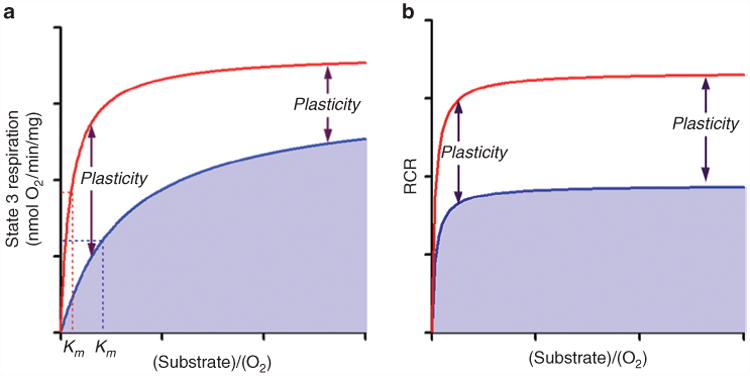Figure 3.

The mitochondrial electron transport chain needs to be able to elevate its capacity to produce ATP at times of increased metabolic demand or decreased fuel supply. Its ability to do so has been called “spare respiratory capacity” or “mitochondrial plasticity.” (a) Mitochondrial state 3 respiration (ADP-stimulated respiration) is dependent on substrate concentration and O2 supply (blue line). Mitochondrial plasticity provides a shift in the Michaelis–Menten constant (Km) so that higher mitochondrial respiration can be achieved with lower substrate or O2 concentration (red line). The effect is less at high concentrations of substrates. (b) The respiratory control ratio (RCR) shows that state 4 respiration is not changed. Mitochondrial plasticity is determined by the efficacy of mitochondrial coupling between O2 consumption and the rate of ATP synthesis (P/O ratio). ADP, adenosine diphosphate; ATP, adenosine triphosphate.
